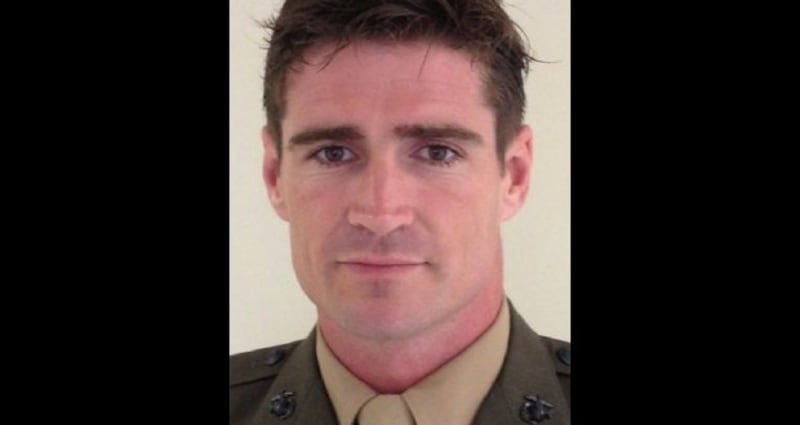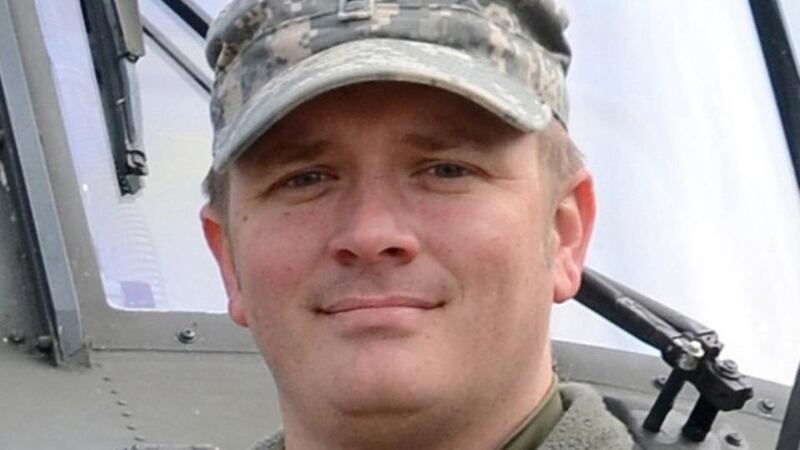A US military investigation into the Black Hawk helicopter crash that killed an Irish member of the US Marines and 10 others off Florida’s coast in March has ruled that pilot error caused the tragedy.
The investigation concluded that the main reason for the crash, which killed US special forces marine sergeant Liam Flynn, a native of Co Kildare, was "spatial disorientation" of both pilots in dense fog.
Mr Flynn (33), who grew up in Betaghstown, Clane, died with six other US Marines and four Louisiana Army National Guard flight crew members when their helicopter crashed in the Santa Rosa Sound near the town of Destin, about 45 miles (72km) off the Florida Panhandle.


One of the US Marine Special Operations Command (Marsoc), the Irishman was on a nighttime training exercise involving rappelling down ropes from a helicopter to water near Elgin Air Force Base.
The investigation found that both Black Hawk pilots failed to switch from “visual meteorological conditions” where they had sufficient visibility to control the aircraft to “instrument meteorological conditions” where they would fly by the helicopter’s instruments.
The report, commissioned by the commander of US Special Operations Command and the adjutant general of the Louisiana National Guard, found the pilots of the crashed helicopter “disobeyed a direct order” by choosing to fly in lower cloud and less visibility than permitted. A second Black Hawk flew in the same mission.
Visibility
Cloud had to be no lower than 1,000 feet (304 metres) and visibility no less than three miles (4.8km) for the mission to take place. The investigative report found that the pilot, Chief Warrant Officer George Wayne Griffin jnr of the Louisiana Army National Guard, decided to fly when the cloud was at 300 feet and there was visibility of just one mile (1.6km).
Investigators said in their report – a partially redacted copy of which was seen by The Irish Times – that Griffin, as air mission commander, was responsible for delegating planning tasks to crew members. However, for the March 10th mission, he “kept the weather planning and briefing task to himself, making it his responsibility to obtain a proper weather briefing, and subsequently brief the other aircrew members”.
At 7.45pm, 36 minutes before the crash, Griffin met two individuals (their names are redacted) at the helicopter and “indicated that the weather forecast was ‘good tonight’ but he did not give a clear briefing of current weather conditions”.
Investigators said he most likely monitored the weather by checking a phone application or website on his mobile phone.
The air crews didn’t challenge Griffin when he decided to conduct the mission below authorised minimum weather conditions. “This is likely because of the high respect and overconfidence that the aircrews of both aircraft had in the decision making and piloting abilities of [Griffin],” said the investigation report.
“During the run-up of both aircraft, individuals exhibited trepidation regarding the weather and the lack of ambient illumination. However, no one spoke up and questioned the wisdom to conduct the mission.”
The Black Hawks took off at 8.16pm. Investigators found that the weather continued to deteriorate and that “within minutes after takeoff it appeared that sea fog rolled in causing extremely reduced visibility”.
Before both aircraft took off crew members could observe stars, see across the bay and spot a tower that was just over two miles away. By the time the two aircraft took off, none of these were visible.
Shortly after going over the water in total darkness, both Griffin and co-pilot Chief Warrant Officer George David Strother, also with the Louisiana Army National Guard, showed signs of spatial disorientation, including “rapid climb and descent manoeuvres, erratic airspeeds and spinning the aircraft”.
‘Anxious verbal exchanges’
The helicopter’s data recorder and cockpit communication transcripts “showed increasingly erratic flight control inputs and anxious verbal exchanges as both pilots tried, yet failed, to gain control of the aircraft,” the report said. The transcript shows Griffin saying shortly after take-off: “Gee it’s dark as [expletive] – that don’t help none.”
“Wow, it’s really dark,” said crew chief, Staff Sergeant Lance Bergeron. “It’s really sh**ty,” said Griffin. The recording shows the crew raising concerns about whether they are high enough to clear trees, poles and wires below them.
After crossing the shore line over the water, Griffin remarked: “Yeah, it’s too dark to see the [expletive] water.”
The Black Hawk crashed at 8.21pm, five minutes after takeoff, and two minutes after flying out over the water, in the tidal sound – a narrow body of water between the Florida mainland and a barrier island – at a position one mile north of where it had taken off. “Watch out, we’re in a bad right turn,” Strother said just seconds before the helicopter crashed. The transcript then shows Strother calling on Griffin to “look down” and to “watch your altitude”.
The report found that both pilots were “sounding very stressed” and that the stress increased until the crash. The pilots had made a last-minute attempt to engage the autopilot but the aircraft was “outside the required flight parameters and the autopilot failed,” the report said.
It is likely that both were flying the aircraft when it crashed after Griffin relinquished the controls to Strother for about eight seconds before taking over again.
The second Black Hawk did not cross the shoreline and instead turned east and flew over land before returning safely to base.
‘Hesitant’
Investigators said Strother was “hesitant to question” Griffin after he demonstrated spatial disorientation. They blamed the failure of both pilots to assist each other in switching to instrument guidance on “a breakdown of leadership at the crew level”.
The Louisiana National Guard assessed the training mission as high risk because it involved a “tactical infiltration/ exfiltration, “over water operations” in which the Marines were more than 30 minutes from land or in the water temperatures of less than 60 degrees Fahrenheit (15.5 degrees), and because there was a “seats out” waiver approved for the helicopter.
Mr Flynn is survived by his wife Destiny, daughter Leilani (1), parents Ann and Billy who live in Co Kildare and seven siblings.
He emigrated from Ireland to Queens, New York, in 2002 and enlisted in the US Marines four years later. He served four tours of duty in Iraq and Afghanistan, his most recent deployment in 2014. He was due to be deployed for a fifth tour at the time of his death. His war decorations include a Purple Heart and Bronze Star.
Marsoc is a small elite force of about 2,500 personnel within the US Marines Corp. The unit has been deployed to combat roles in Afghanistan and other conflict areas over the past eight years.
Investigators found that there was no evidence that Marsoc personnel pressured the flight crew into flying that night. Both helicopters were assigned to an assault helicopter battalion based at Hammond, Louisiana, about 260 miles from the crash site.











